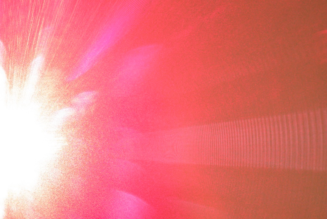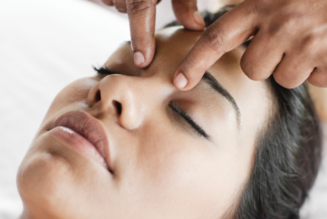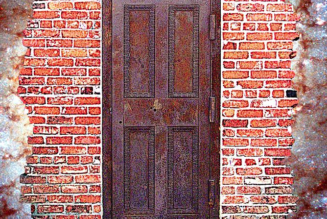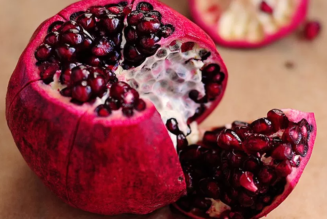Panchakarma – An Ayurveda Detox and Rejuvenation Process
Ayurveda is a life science which teaches an appropriate art of living in order to achieve longevity. Ayurveda explains unique methods to help guide each and every individual on how to maintain a healthy balance by considering simple changes in lifestyle, eating habits, and exercise. Ayurveda gives priority not only to preventive and therapeutic procedures but also to purification and rejuvenation therapies. The balance within the body is mainly governed by three doshas [vata, pitta, and kapha] which is also influenced by external environmental factors like seasonal imbalances, repressed emotions, holding natural urges, bad eating habits, incompatible food combinations and irregular use of the senses: all these factors may lead to an imbalance in the doshas.
Imbalances within the body may result in impairment of agni [the digestive fire] within the body. This deranged agni develops limitations in the ability to digest food properly and ultimately forms ‘Ama’ [undigested food material; toxins] in the body. When this Ama circulates through various channels in our body, it clogs the channels and spreads toxins in the entire body. In this context, Ayurveda described treatments to help eliminate and prevent these diseases in an elaborate method. Ama which is the main internal cause of disease can be eliminated from the body by ‘Sodhana’; a group of cleansing procedures used to eliminate ama from our body.
PANCHAKARMA – Five Therapeutic Procedures
Panchakarma or five therapeutic procedures are part of ‘sodhana’ treatments. Ayurveda also described ‘shamana’ which are considered less intense procedures for prevention and curing of diseases. Before the actual cleansing procedures, Ayurveda describes purva karma or pre-cleansing procedures to sufficiently prepare the body. These preparatory steps are ‘SNEHA’ AND ‘SWEDHA’.
SNEHA:
Sneha is the application of medicated oils to the entire body with gentle massage and allows the toxins to move into the gastrointestinal tract for easy elimination. It is also administered internally for 3 – 5 days depending on the disease and patient’s tolerance.
SWEDA:
Sweda is sudation or sweating which is done immediately one day after sneha and helps to liquefy the toxins, allowing for easy movement towards the gastrointestinal tract. After sneha & sweda for 3—7 days ‘PANCHAKARMA’ are done depending upon the patient’s Prakruthi (constitution) and Vikruthi ( disease).
PANCHAKARMA ~ ‘FIVE TYPES OF SHODHANA’
1. VAMANA
2. VIRECHANA
3. BASTI
4. NASYA
5. RAKTHA MOKSHANA
1. VAMANA — THERAPEUTIC VOMITING:
Vamana or induced vomiting is indicated mainly in ‘Kapha’ disorders where excess mucus is lodged in all sinuses or channels in the body. Patients feel immediate relief after Vamana due to the elimination of mucus from all channels. It is indicated in diseases like chronic asthma, bronchitis and repeated attacks of cough and cold. It is also indicated in cases of severe psoriasis and leucoderma. After vamana, it is recommended to consider taking rest, herbal smoking, fasting, eating a light diet and avoiding the suppression of natural bodily urges. Proper administration of vamana should provide relief from congestion in the chest, allow for effective breathing, provide good appetite and create a lightness within the lungs.
2. VIRECHANA – PURGATION:
Virechana or purgation therapy is indicated in ‘Pitta’ disorders [i.e. excess bile in the body] often causing symptoms like nausea, vomiting, G.I disturbances and even jaundice. This excess pitta within the body can be eliminated by therapeutic purgation. This therapeutic purgation helps to relieve all the above mentioned “pitta” disturbances from body. After virechana, one often feels relief from nausea and vomiting, feels a sense of lightness within the abdominal region, and may even develop soft stools.
3. BASTI – ENEMA:
Basti or Enema therapy is indicated in ‘VATA ‘disorders. It is considered as the best treatment for all vata disorders like chronic constipation, abdominal distention, sexual disorders, backache, sciatica and other joint disorders like rheumatoid arthiritis, gout, and muscle spasms. Vata is the main active principle in the pathogenesis of a disease. Vata is the moving force in the body; it is responsible for circulation, elimination and retention. So, it is also responsible in spreading toxins and wastes in the body. If Vata is eliminated from its roots (i.e. from the large intestine) it is easy to treat any disease.
4. NASYA — NASAL ADMINISTRATION:
Nasya is administration of medicated drugs through the nose. ‘NASA HI SIRASO DWARAM’ means the nose is the door to the brain. Prana or life energy enters the body when we breathe through the nose. This prana or life energy in the brain governs all sensory and motor functions in the body. So, it is indicated in disorders where prana is affected like sinusitis, convulsions, migraines and all sensory organ disorders. Medicated drug administration followed by a facial massage may also improve with breathing more effectively. Nasya is described as part of a daily regimen for the general wellbeing of each individual.
5. RAKTHA MOKSHANA — BLOOD CLEANSING:
Raktha mokshana is the purification and cleansing of blood. Ama, which is considered the main cause of disease as it enters into blood as a toxin resulting in toxemia and other circulatory disorders like high blood pressure, and skin conditions [i.e. urticaria, herpes, eczema, acne and scabies]. Raktha mokshana is also indicated in pitta raktha associated disorders like an enlarged spleen and liver. Raktha mokshana is bloodletting via three different methods, mentioned in the classics. Bloodletting provides excellent results with conditions such as blood and skin disorders. Food such as yogurt, fermented foods, sour foods and alcohol are considered toxic to blood.
DIET AND LIFESTYLE:
Ayurveda describes, in great detail, diet and lifestyle instructions for a person who is undergoing Panchakarma treatments. These are designed keeping in mind that after a pancha karma treatment, agni is deranged. Therefore, to bring agni back to normal power it is advised to eat very light and easily digestible food like kitchari (cooked basmathi rice and moong dal) which is sweet, delicious, and nutritious to the body.
DISCLAIMER:
Panchakarma are specialised treatments which require proper knowledge and skill to perform. Therefore, one should not try these at home without proper supervision of a trained professional. This information is for educational purposes only and not to be considered medical advice.



![An Ayurvedic Purification Purge [Virechana]](https://healthyayurveda.com/wp-content/uploads/2015/11/1.-Vrechana-Image-327x219.png)
![Ayurvedic Daily Routine: Oleation + Self Massage [Abhyanga]](https://healthyayurveda.com/wp-content/uploads/2015/11/Screen-Shot-2015-11-05-at-12.41.11-PM-327x219.png)



